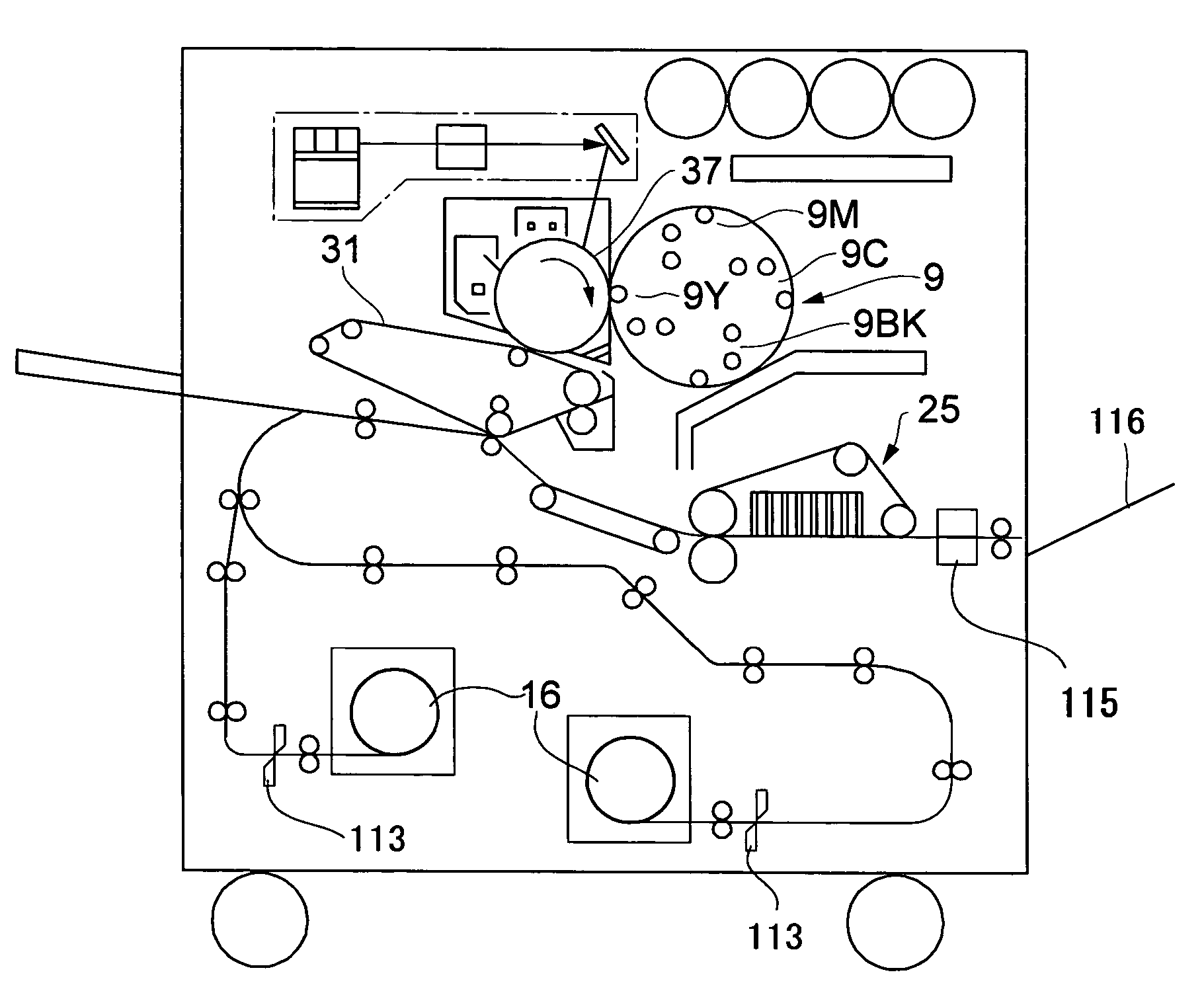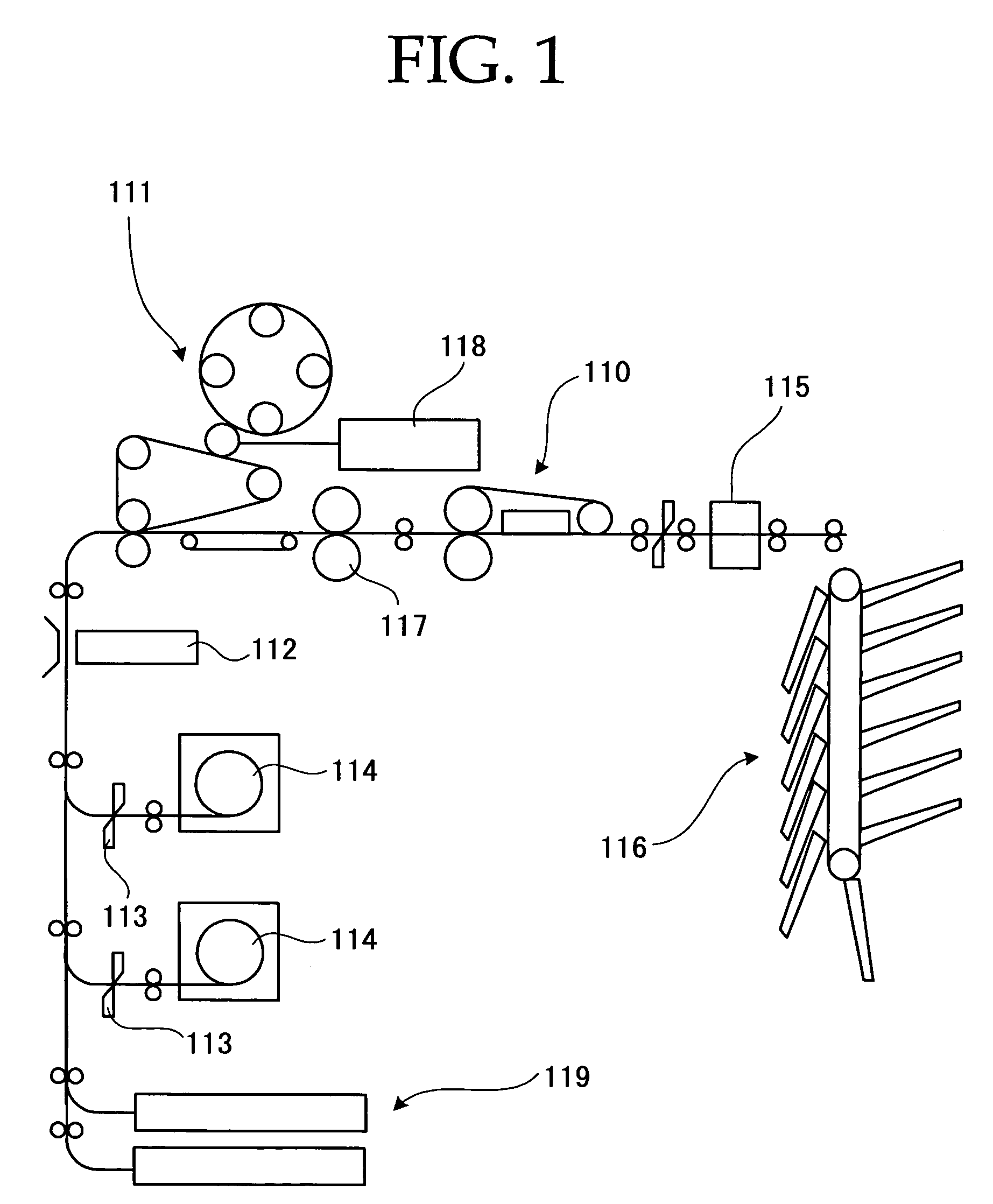Image forming apparatus, image forming system, and electrophotographic print
an image forming and electrophotography technology, applied in the direction of electrographic process apparatus, optics, instruments, etc., can solve the problems of requiring much effort and cost, and the technology of high image quality that is equal to silver-halide photographs, so as to efficiently and conveniently provide high-quality electrophotography, and achieve space and power savings
- Summary
- Abstract
- Description
- Claims
- Application Information
AI Technical Summary
Benefits of technology
Problems solved by technology
Method used
Image
Examples
example 1
Preparation of Support
[0369]A band of woodfree paper having a basis weight of 160 g / m2 was used as a raw paper. A 7:3 (by weight) mixture of a high density polyethylene (HDPE) and a low density polyethylene (LDPE) was extruded and applied at 310° C. onto a backside of the raw paper to thereby form a backside polyethylene resin layer 15 μm thick thereon.
[0370]Next, a low density polyethylene (LDPE) was extruded at 310° C. and applied onto a front side of the raw paper to thereby form a front-side polyethylene resin layer 31.7 μm thick thereon.
[0371]Thus, a band of double-sided polyethylene resin coated support was prepared. The optical transmittance of the support was determined with a direct-reading haze meter HGM-2DP (trade name, available from Suga Test Instruments, Japan) and was found to be 12.1%.
Preparation of Coating Liquid for Interlayer
[0372]A coating liquid for interlayer was prepared by mixing and blending the following components.
[0373]
Acrylic resin dispersion (solid cont...
example 2
[0388]A roll of electrophotographic image receiving sheet was prepared by the procedure of Example 1, except that the toner-image receiving layer was not formed.
[0389]A photographic image was printed on the prepared electrophotographic image receiving roll using the image forming apparatus shown in FIG. 3 under the following conditions. Using an image smoothing and fixing unit capable of feeding a transparent toner shown in FIG. 6, a transparent toner having an average particle diameter of 10 μm was uniformly fed to a portion of the belt facing the toner image in an amount of 10 g / m2 to thereby smooth and gloss over the image. Thus, an electrophotographic print was prepared.
reference example 1
[0395]A photographic image as above was printed using a silver-halide photographic printer Frontier 350 (trade name, available from Fuji Photo Film Co., Ltd., Japan) to thereby yield a borderless silver-halide photographic print 127 mm wide and 178 mm long.
[0396]The 45-degrees glossiness and sensory quality of the respective prints were determined in the following manner. The results are shown in Table 3.
[0397]The 45-degree glossiness of the respective prints was determined according to JIS Z8741.
[0398]In the following sensory tests, rating was performed according to the following criteria and was expressed as an average of 20 persons' rating, who are relatively excellently capable of rating image quality of photographs. The result is shown in average.
[0399]5: Very desirable
[0400]4: Desirable
[0401]3: Medium
[0402]2: Undesirable
[0403]1: Very undesirable
[0404]
TABLE 3GlossinessMargin of imageSensory testEx. 1Electrophotograph95no4.2Ex. 2Electrophotograph98no4.2Com.Electrophotograph68no1...
PUM
 Login to View More
Login to View More Abstract
Description
Claims
Application Information
 Login to View More
Login to View More - R&D
- Intellectual Property
- Life Sciences
- Materials
- Tech Scout
- Unparalleled Data Quality
- Higher Quality Content
- 60% Fewer Hallucinations
Browse by: Latest US Patents, China's latest patents, Technical Efficacy Thesaurus, Application Domain, Technology Topic, Popular Technical Reports.
© 2025 PatSnap. All rights reserved.Legal|Privacy policy|Modern Slavery Act Transparency Statement|Sitemap|About US| Contact US: help@patsnap.com



